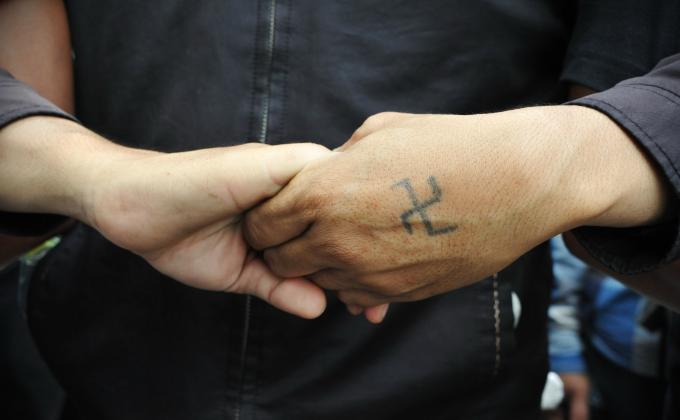Date: 26 August 2011, 16:30 - 19:00
Venue: T.M.C. Asser Instituut
As part of the closing of the first Summer Programmme on Countering Terrorism in the Post- 9/11 World, ICCT hosted a Panel Discussion on "The Consequences of the Norway Attacks for (Counter-) Terrorism Strategies".
Hosted at the T.M.C. Asser Instituut, panelists included: Mr. Imtiaz Gul (Center for Research & Security Studies Islamabad), Dr. Magnus Ranstorp (Swedish National Defence College) and Mr. Kadafi Zaman (TV2 Norway). The panel focused on a number of questions such as: Were the Norway Attacks an isolated incident, a continuation of an existing trend or the start of a new development? Are ‘lone wolf’ terrorists currently the biggest threat, as posited by US President Barack Obama? How can we identify potential perpetrators? What are the motivating factors for individuals choosing to engage in violent political action, and how can these be mitigated?



Mr. Kadafi Zaman discussed his initial reactions as a journalist in Norway when news of the attacks first broke. Initial coverage showed a nation in deep shock and sorrow. There were no immediate cries for retribution but instead a focus on solidarity and transparency. Norwegian Prime Minister Stoltenberg eloquently described his feelings and those shared by many of his fellow countrymen: “We meet terror and violence with more democracy and will continue to fight against intolerance”. Zaman described how the sentiment, understandably, began to change and questions were raised: What went wrong? Why did the intelligence and security services not identify Breivik at an earlier stage- given his activities on various extremist websites and forums? And, would Norway have responded similarly if it was not a blonde Norwegian violent extremist but an Islamist?
Mr. Imtiaz Gul argued that there were two predominant questions raised in the immediate aftermath of the Norway attacks: who was responsible and how will these attacks affect other parts of Europe? Gul also described the initial reaction in the Middle East. Many feared that the perpetrater might be an Islamist and worried how this might impact the region if true. He argued that the initial confusion about the origins of the perpetrator and the prevailing emphasis on the attacks being a Jihadist plot, even when new facts indicated otherwise, underscored some of the misconceptions about terrorism and Muslim immigrants in Europe. It is difficult to predict what will happen next, but Gul expects Breivik’s actions will lead to intensified discussions on integration, immigrant status and multiculturalism in Europe.
Dr. Magnus Ranstorp commended the Norwegians on their remarkable crisis communication and character demonstrated throughout the tragedy, from the highest governmental level to the ordinary citizens. At the same time however, some pertinent questions remained outstanding, especially in relation to the apparent failure of early warning mechanisms. Breivik’s manifesto could function as a handbook of early warning signals, and there is much in there that still needs to be deconstructed. Ranstorp argued that, in Breivik’s case a combination of personal characteristics – often contradictory – ideology and the political and economic climate resulted in the perfect storm. Instead of looking for blame, he continued, the attacks and the responses to them should be analysed and lessons should be learned. For instance, the police response mechanisms require re-evaluation with regard to this type of incident and there is an opportunity to learn from the active shooter protocol currently utilised in the US and Canada. The Norwegian attacks, Ranstorp concluded, could be a black swan event but the picture of the terrorism threat in Europe is highly complex, muddled, unclear and the future uncertain.
After the panel discussion the audience was invited to ask questions and engage the panelists. The subsequent discussion touched upon a variety of issues but one in particular stood out. Participants debated whether Breivik’s trial should be open or behind closed doors. On the one hand, participants argued, that Breivik should not be given the stage he so clearly desires, but on the other it is difficult to balance this while maintaining the rule of law and upholding human rights. Participants concluded that one of the key tools to maintain this balance is to keep communication lines open, to facilitate discussion within the democratic sphere as long as the rule of law is upheld but to be wary not to exclude and shut actors out.



